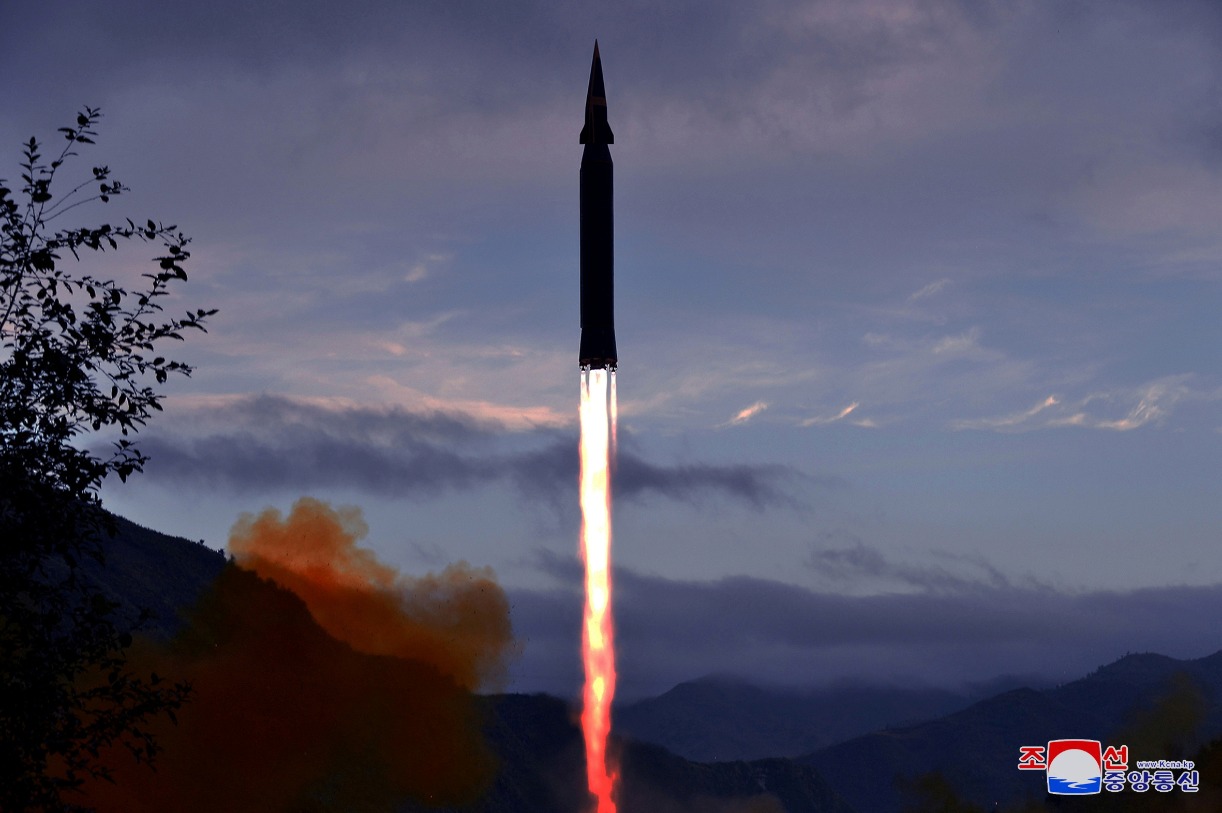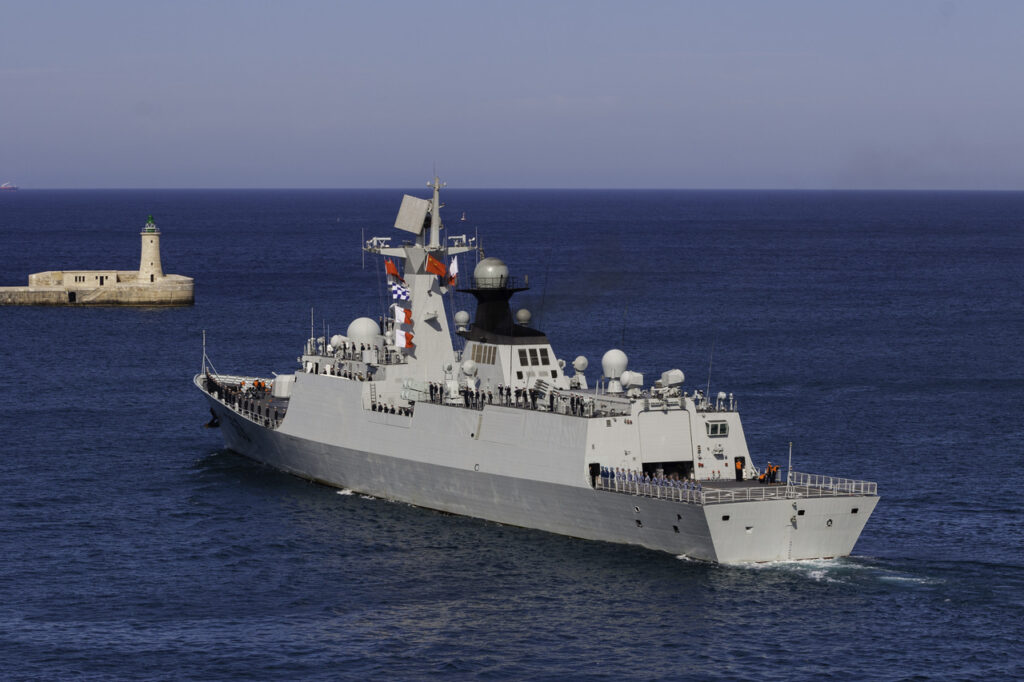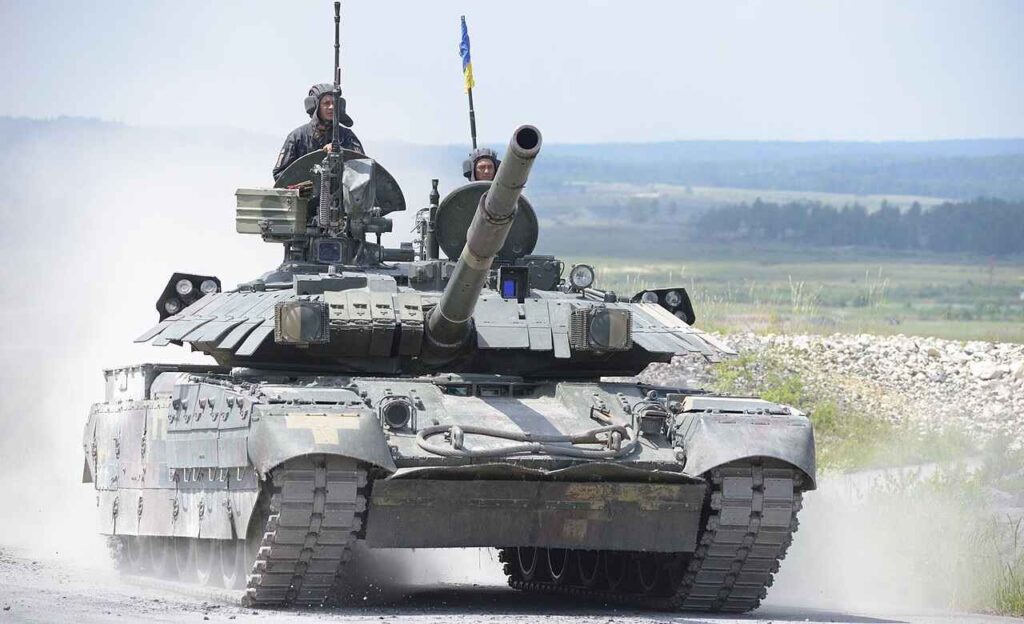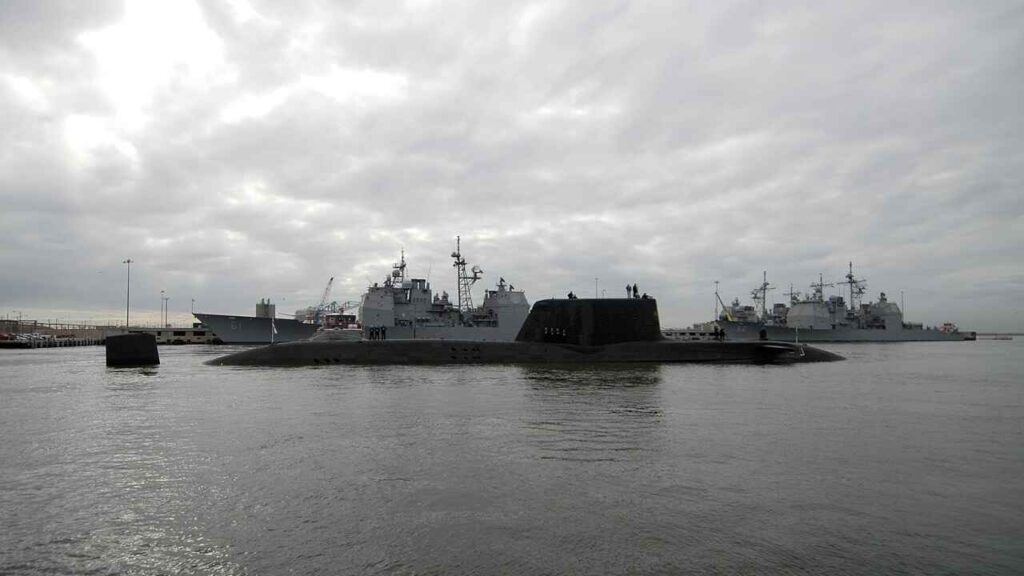
Will America Lose the Hypersonic Arms Race?
For the first time since the early days of the Cold War, America is lagging behind its international competitors in a technology race with far-reaching military and diplomatic implications. Hypersonic weapons are one of six emerging technologies the Pentagon believes could dictate the outcomes of future conflicts, but as America’s competitors continue to field new hypersonic missiles… the U.S.’ own efforts continue to rack up failures.
So what gives? How is it possible that the United States, with a $700+ billion annual defense budget, can’t get a hypersonic weapon into service while Russia’s military, assigned just $61 billion annually, already has two? Well, the truth, as truths tend to be, is complicated, and as we’ll see a few hundred words from now, that very question may misrepresent the true nature of the hypersonic arms race we now find ourselves in.
Last week, we explored the hypersonic missiles America’s competitors in Russia and China already have in service, and briefly discussed America’s efforts to close the capability gap they represent. Now, it’s time to explore the reasons America has fallen behind in this rapidly advancing field.
Despite leading the world in hypersonic technologies in the ’90s and having plans for hypersonic aircraft dating back to the 1950s, the past two decades of asymmetric conflicts in the Middle East forced a shift in focus away from advancing military technologies and toward the large scale employment of existing combat systems. Like the F-14 and F-22 Raptor, hypersonic missiles were seen as incredibly expensive weapons with no potent threat they were needed to address. Now, with a new Cold War of sorts kicking off between world powers, the Pentagon is making up for lost time the best way it knows how: by throwing a bunch of money at the problem.
In 2020, the Pentagon devoted just over $2 billion to developing hypersonic technologies, including missiles. In 2021, that number jumped to $3.2 billion. It grew once again in the Defense Department’s 2022 budget proposal, with $3.8 billion now earmarked for the effort. All told, there are at least 70 hypersonic programs drawing funds from this pool, seven of which are for publicly disclosed hypersonic missiles.
Hypersonic missiles tend to come in two forms: hypersonic glide vehicles (HGVs) and hypersonic cruise missiles (HCMs). For a refresher on the differences between them, make sure to check out our previous coverage.
Related: What exactly are hypersonic missiles and why do they matter?
Why is the US behind in fielding hypersonic missiles?
The United States is indeed lagging behind the competition in fielding operational hypersonic missiles, but the word operational can be pretty subjective in this context. Russia, for instance, says their premiere stealth fighter, the Su-57, is in operational service despite possessing only a single production aircraft and a dozen prototypes. By American military standards, the Felon would still be many years away from earning that coveted “operational” label.
But the fact remains that the United States still appears to be literally years away from fielding a hypersonic weapon, and in the minds of many, that’s a serious problem.
America isn’t as far behind as you might think
The word hypersonic has a cutting edge connotation to it and recent media coverage of these technologies has treated the realm of hypersonic flight like it’s right out of a science fiction movie. The truth, however, is that hypersonic platforms have already been around for decades, and you’re almost certainly already familiar with a number of them.
The hypersonic barrier is, as we’ve already discussed, Mach 5, or approximately 3,838 miles per hour. At these speeds, air itself becomes the enemy as it impacts the vehicle, creating enough friction to damage or even incinerate most common aircraft and missile materials. The space shuttle, however, regularly exceeded Mach 25, or more than 17,500 miles per hour, during reentry. The Air Force’s current (and secretive) X-37B can also reach these blistering speeds. In fact, practically every ballistic missile and spacecraft mankind has ever launched had been and still is hypersonic in nature.
Related: The X-15 was America’s first piloted hypersonic aircraft
That means, not only does the U.S. already possess a wide variety of hypersonic platforms just like many other nations, even corporations operated by Americans like Elon Musk and Jeff Bezos can claim hypersonic capabilities. That’s not to say that we should adjust the hypersonic weapons conversation to include everything from NASA’s Mercury missions to SpaceX’s latest Crew Dragon flights. Rather, it’s meant to highlight the selective use of the term “hypersonic” in most media to frame the discussion specifically around the capabilities America lacks. That is, after all, the more dramatic story.
“It is very commonly asserted that there is an arms race in hypersonic technology and that the United States is losing,” explained James Acton, who serves as the co-director of the nuclear policy program at the Carnegie Endowment for International Peace and is also a trained physicist.
“But in many ways, the United States is running a different race from Russia and China.”
Both Russia and China, for instance, are exploring reusable spacecraft to aid in their own defense efforts, with China testing their own version of America’s X-37B for the first time in September of 2020, and Russia announcing the development of their own “X-37B-like” reusable spacecraft in March of 2021.
When viewing hypersonics through a lens of reusable military space platforms then, the United States has the resounding lead. The X-37B made its space debut nearly 12 years ago now.
The competition isn’t as far ahead as they seem either
Even in terms of specifically envelope-pushing hypersonic technologies in the contemporary sense of the word, the U.S. again has a solid pedigree.
All the way back in 2004, NASA’s 12-foot long scramjet technology demonstrator known as the X-43A reached Mach 9.6 in testing. In 2011, Boeing’s B-51 Waverider, also a scramjet technology demonstrator, flew under scramjet power for 210 seconds, reaching Mach 5.1. In August of that same year, DARPA’s Falcon Project and its HTV-2 boost-glide vehicle achieved Mach 20 during a nine-minute flight test. And in 2017, the U.S. and Australia conducted a joint test of the HiFire scramjet missile, reaching speeds in excess of Mach 8.
Meanwhile, Russia’s Kh-47M2 Kinzhal (or Dagger), which entered service in 2017, is neither a hypersonic boost-glide vehicle nor is it a scramjet-powered cruise missile. Instead, it’s little more than the first stage of a 9K720 Iskander short-range ballistic missile married to a new targeting apparatus and mounted on the belly of a MiG-31 (or carried inside Tu-22M3 bombers).
Related: What exactly are hypersonic missiles and why do they matter?
In other words, the Kinzhal is an air-launched ballistic missile made of components that were largely designed all the way back in 1988. Like so many of Russia’s highest-profile weapons, the Kh-47M2 is little more than a redress of Soviet-era firepower. While this sort of weapon does offer Russia increased military capability, there’s little practical value in the U.S. rushing a similarly rudimentary design into service beyond garnering press attention, which is, of course, one of Russia’s longstanding strategic goals (making the deployment of the Kinzhal a strategically crafty play).
The United States’ hypersonic missile efforts currently include at least two hypersonic boost-glide vehicles and potentially up to five hypersonic cruise missiles leveraging scramjet propulsion. A scramjet, or supersonic ramjet, is essentially an air-breathing jet engine that reaches combustion with supersonic airflow (unlike traditional ramjets which use shock cones to reduce airflow to subsonic speeds). This type of propulsion allows for incredibly high rates of travel, but it needs to rely on a conventional source of power, whether a ramjet or a rocket booster, to reach those speeds in order to operate well.
Of course, putting a ramjet/scramjet-powered weapon system into service has never been done by any nation before, making it pretty logical that this effort would lag behind Russia’s approach to using old technology and brute force to enter the hypersonic arena. America’s approach will result in a longer timeline to service, but it may well also result in far more capable weapon systems in the long run.
Russia and China both do have hypersonic boost-glide vehicle weapon systems in service, however. Despite America’s previous successes in this specific realm, there’s no denying that the U.S. has yet to match that capability… but there may be good reason for that too.
Related: Russia’s high profile weapons are all smoke and mirrors
America’s focus is on conventional hypersonic weapons
America only has plans to develop new conventional, or non-nuclear, hypersonic weapons at this point, and that poses larger technical challenges than fielding nuclear ones.
Nuclear weapons, as you can imagine, don’t need to be nearly as accurate because of the relative size of their blast radius. A conventional weapon, on the other hand, carries a smaller destructive yield, and as such, must be more accurate in order to destroy its target.
This point was laid out more than once in a recent report on hypersonic missiles published by the Congressional Research Service:
“U.S. hypersonic weapons will likely require greater accuracy and will be more
-“Hypersonic Weapons: Background and Issues for Congress” via the Congressional Research Service, dated October 19, 2021
technically challenging to develop than nuclear-armed Chinese and Russian systems. Indeed, according to one expert, ‘a nuclear-armed glider would be effective if it were 10 or even 100 times less accurate [than a conventionally-armed glider]’ due to nuclear blast effects.”
Both of Russia’s operational hypersonic weapons, the KH-47M2 Kinzhal and the Avangard boost-glide vehicle, can be armed with nuclear warheads. China’s DF-17 is considered nuclear-capable but is not openly called a nuclear weapon. Its primary purpose, however, is to engage aircraft carrier-sized targets at great distances (potentially in excess of 1,000 miles), and to date, there’s little evidence to suggest that their targeting apparatus could accomplish such a feat with a conventional warhead.
“The U.S. focus relative to hypersonic weapons is on the delivery of conventional weapons while Russia and China are more likely to use hypersonic missiles for nuclear payloads,” explained George Nacouzi, a senior Engineer at the RAND Corporation.
Related: How hypersonic drones could defeat missiles the same way the SR-71 did
There’s an argument to be made that new and more advanced nuclear weapons, hypersonic or otherwise, offer little strategic value. Any nuclear exchange would almost certainly result in full-scale nuclear war, so unless a new weapon can neuter the opposition’s nuclear triad or equivalent, a dated nuke is just as good as a 21st-century one. Strategic value can only come from a weapon that forces a shift in your opponent’s strategy. To date, Russia’s hypersonic weapons don’t seem to cross that barrier.
China, however, has forced a massive shift in U.S. Navy and Marine Corps priorities thanks to the introduction of the DF-17, but it’s still important to remember that this shift is based on the expectation that China will eventually get over the massive technical hurdles associated with targeted a moving vessel at range… not necessarily the understanding that they already have.
Related: Russia’s massively powerful nukes are strategic duds
But America’s recent technical failures can’t be ignored
It seems clear that the conversation about the modern hypersonic arms race has been slightly skewed by a combination of confusion about the latest defense buzzword and maybe even some good old fashioned media sensationalism. But to call that the end of this story would mean ignoring the Mach 5 elephant in the room: America’s hypersonic weapons programs have been riddled with failure in recent years.
When looking back at hypersonic test programs operated by the Department of Defense over the past decade or so (not including some of the tech demonstrator tests discussed earlier), you won’t just find a list ripe with frustrating failures, but seemingly preventable ones. Many of these failures occurred before reaching hypersonic velocities, meaning it was tried and true technology like rocket boosters and stage separation mechanisms that went wrong. Most frustrating of all, there’s no data to be poured over with these sorts of failures, and thus, no lessons to be learned about the nature of hypersonic flight.
Out of 16 tests conducted since 2010, four failed due to problems with the missile’s conventional rocket booster, with one other called a total failure for undisclosed reasons. Two more failed due to issues with stage separation mechanisms or control fins, both of which are technologies the U.S. has had in service for decades. An additional three tests were considered partial failures after achieving hypersonic speeds before something went wrong.
In all, the Pentagon has only had six successful hypersonic weapons tests since 2010, with the most recent in September of this year. That, however, was the only successful test out of America’s last five attempts. The most recent failure came on October 21 of this year, when again, a conventional rocket booster failed. If these were tests in Geometry instead of hypersonic missiles, it’s safe to say America would be looking at summer school.
Related: How the B-21 Raider could shift power in the Pacific
America’s limited test infrastructure can’t be ignored either
But weapons tests are supposed to fail, that’s the very nature of testing. There’s no telling how many undisclosed failures both Russia and China have experienced in their own hypersonic efforts, thanks to these nations lacking a free press to report on them. The more egregious issue here isn’t necessarily that 10 out of 16 tests at least partially failed… it’s that the United States has only conducted 16 tests since 2010 to begin with. The fact of the matter is, until recently, the U.S. simply didn’t feel a pressing need to invest in hypersonic technology.
“The bureaucracy that we’ve built into our defense and acquisition enterprise, not just in space but in other areas, has slowed us down in many areas,” Gen. David Thompson, vice chief of space operations, recently told Politico.
“The fact that we have not needed to move quickly for a couple of decades — in the sense of a strategic competitor with these capabilities — has not driven us or required us to move quickly.”
But even after the defense apparatus shifted focus toward hypersonics, it remains just one area of focus. That means hypersonic weapons have to compete for time on test ranges with other developmental programs that have similarly far-reaching implications and national importance.
“We prepared a number of different investment portfolios to try to improve our capacity both in tunnels and test ranges, but right now, there are just too many pressures on the Air Force budget to address all of them,” Maj. Gen. Christopher P. Azzano, commander of the Air Force’s Test Center at Edwards Air Force Base, recently told Air Force Magazine.
It’s not just military test ranges holding hypersonic efforts back. There is only one wind tunnel in the country that can manage both the high speeds and the high temperatures associated with hypersonics testing, and it belongs to NASA (who have their own programs to focus on). The U.S. has earmarked around $500 million to put toward wind tunnel facilities to ease this choke point, but it’s not the only one. Test range facilities are expanding, but will remain limited for years to come.
“To deliver on the time scales required, I think we need to be testing on the ground and in flight at a pretty high pace,” explained Mark J. Lewis, Executive Director of the National Defense Industrial Association’s Emerging Technologies Institute.
“Stepping up the tempo of testing will also make all the steps involved—range safety, telemetry, checklists, etc.—more routine and reduce errors that can stop a program in its tracks.”
Related: The US Navy may soon have a way to shoot down hypersonic missiles
The hypersonics arms race isn’t quite what it seemsChinese DF-17 hypersonic anti-ship missiles
Maybe it’s not quite fair to say that nobody is currently winning the hypersonic arms race, because it seems clear that not all nations are pursuing this technology with the same goals. For a nation like Russia, suffering under international sanctions and a stagnate economy, fielding the first hypersonic weapons was incredibly important.
These weapons offer little in the way of strategic capability, but garnered the nation’s weapon programs a great deal of international attention and prestige. That matters for a country that can’t afford to repair its single, ailing aircraft carrier, has struggled to fund its standing Su-57 orders, and has yet to find a way to finance large-scale production of their advanced T-14 Armata tank (among a long list of other unfunded or underfunded programs). Russia needs foreign buyers for platforms like their new Checkmate fighter in order to be able to afford to build their own in any real numbers. The same can be said for advanced missile systems.
Related: Checkmate: The details on Russia’s new stealth fighter revealed
China’s hypersonic goals have a lot to do with presenting an image of military parity with the United States, in keeping with their stated aim of becoming the dominant world power by 2049. The DF-17 system has also forced the U.S. military to reconsider its approach to force projection in the Pacific, making it a successful strategic weapon even if it never proves capable of hitting an aircraft carrier at all.
And then there’s the United States, which is not reliant on foreign weapon sales to fund its own programs, and is already perceived as the world’s preeminent military power. America has nothing to gain by rushing a hypersonic weapon into service beyond prestige, but prestige itself is a funny game. Russia and China’s hypersonic weapons have been in service for a few years, and it stands to reason that America’s missiles could be as much as five years behind them before becoming operational themselves.
But from that point forward, the hypersonic arms race will stop being about when each nation brings them online and start being about the strategic and tactical capability these weapons provide. America was poorly positioned to win the first leg of this race, but is now well-positioned to win the second.
And the truth is, while the first sprint is aimed at winning headlines, the second, while perhaps less prestigious in the eyes of the media, is aimed at winning wars.
This article first appeared at Sandboxx.
Image: Reuters.


